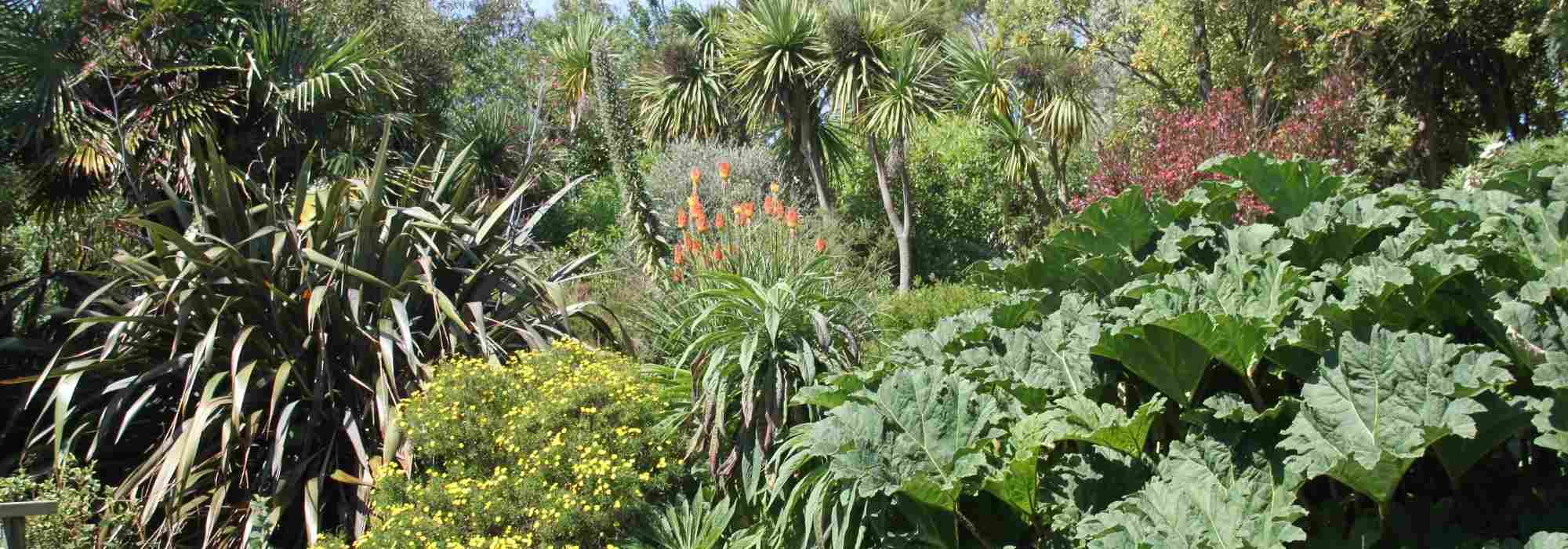
How to design a tropical garden?
Easily create a tropical garden
Contents
Who hasn’t dreamed of the ends of the earth and tropics in their own garden, where exuberant exotic plants, palm trees, and broad foliage coexist, creating a lush vegetation and vibrant colours? Creating an exotic garden is achievable in (almost) any garden, provided you select the right plants, prepare your soil adequately, and infuse a lush atmosphere. While the choice of plants may vary depending on the region and a more or less favourable climate, there is a wide range to choose from to create a cocoon of exotic greenery, a true invitation to travel.
Subtropical, even tropical plants, preferred combinations, decoration, mistakes to avoid… Here are several tips to help you transform a corner of your garden into a little paradise and tropical jungle!
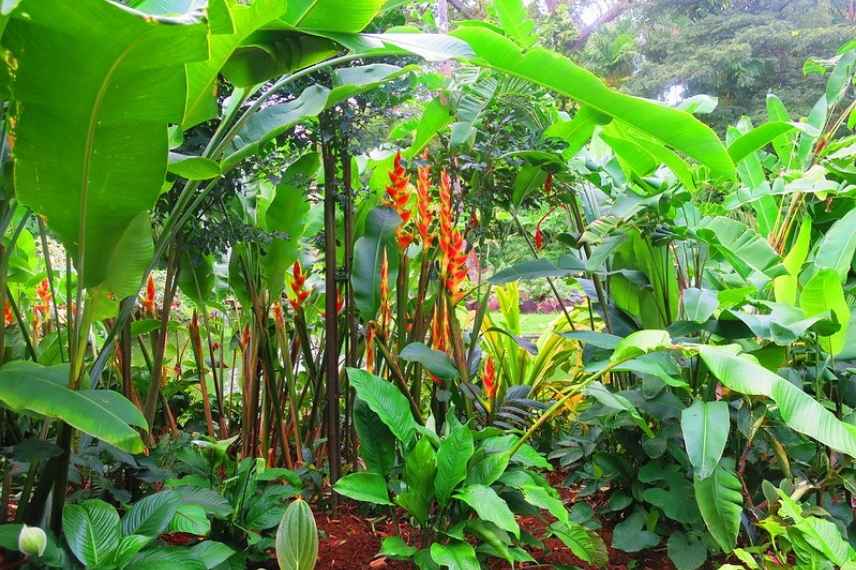 What if you tried the tropical experience in your garden?
What if you tried the tropical experience in your garden?
Exotic Plants: The Plant Palette!
For any type of garden, but particularly to create an exotic abundance, the plant material will be at the heart of the matter! The idea of an exotic atmosphere arises from a profusion of greenery, flowering in warm tones, and large, generous leaves in various or unusual shapes, from the palmate leaves of palms to the elongated foliage of Cannas, to the more pointed leaves of Phormiums… But let’s look in detail at which plants for an exotic garden:
- Giant-leaved perennials: Giant Hostas, ferns, Darmera peltata, Colocasias…
- Spectacular flowers: Hibiscus, Brugmansia, Echium candicans, Callistemon, Puya, Protea, Hedychium, Strelitzia, Malaleuca, Leucospermum, Solandra grandiflora…
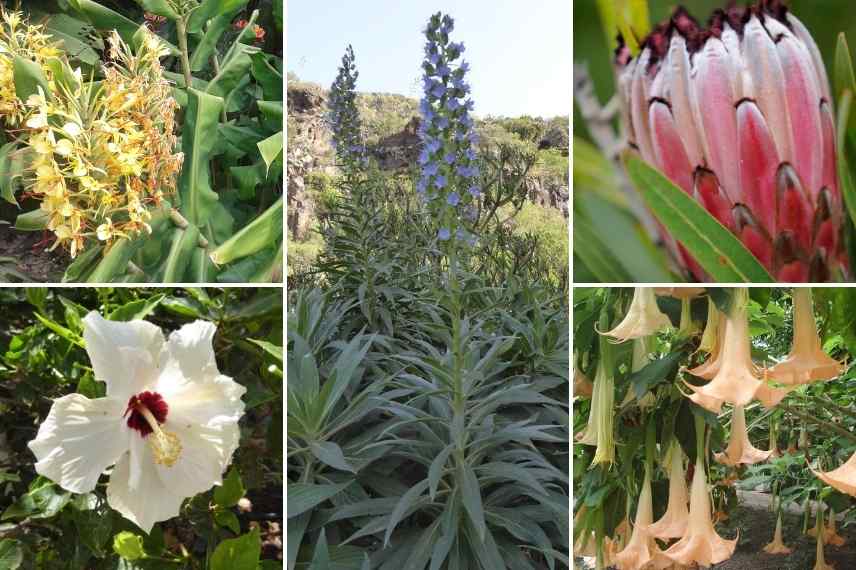
Hedychiums, Hibiscus, Echium, Protea and Brugmansia (© Gwenaëlle David)
- Structuring plants: Bamboos (Phyllostachys, Fargesias), Musas, Agaves, Palms, Phormium, Dicksonia antartica, Gunnera manicata, Melianthus major, Mangave, Schefflera taiwaniana…
- Unique forms: Tetrapanax, Phormium and Astelias, Cordyline, Yuccas, Cycas revoluta, Euphorbia mellifera, Aeoniums …
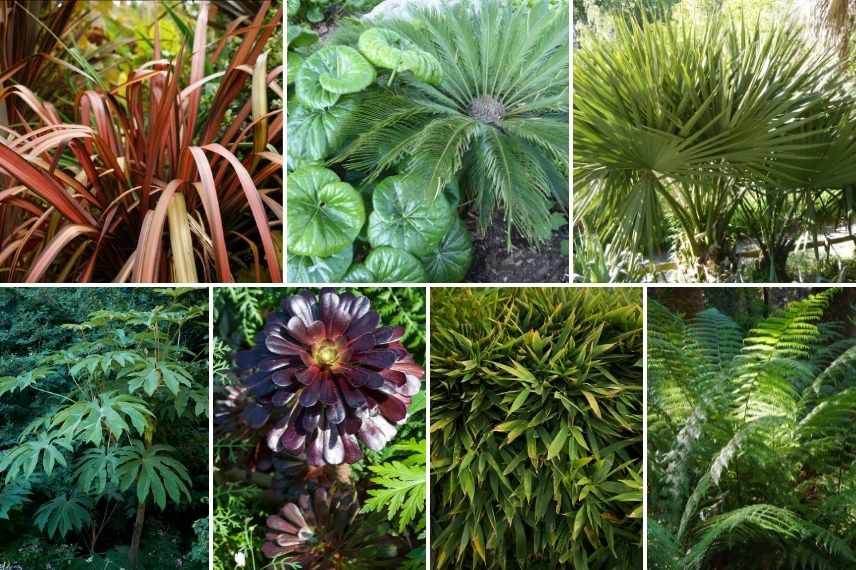
Phormium ‘Pink Panther’, Farfugiums and Cycas revoluta, Sabal minor, Tetrapanax, Aeonium, Phyllostachys aurea, Dicksonia antartica
- Tropical blooms and colours: Alstroemerias, Cannas, Dahlias, Tibouchina urvilleana, Hemerocalles, Eucomis, Crocosmias, Agapanthes, Zantedeschias, Tricyrtis, Aloe arborescens, Kniphofias, Amaryllis belladonna, Watsonias, Tradescantias, Tigridias…
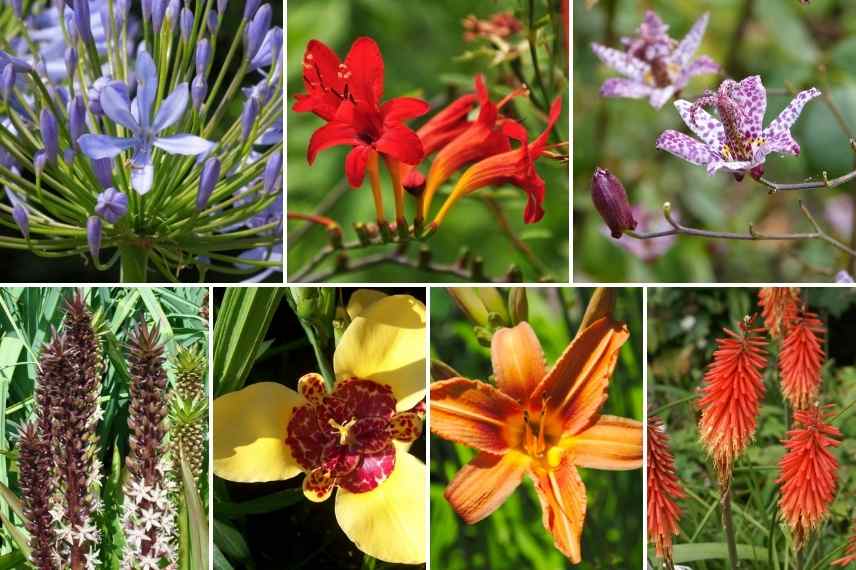
Agapanthus, Crocosmia, Tricyrtis ‘Hirta’, Eucomis ‘Sparking Burgundy’, Tigridia pavonia ‘Aurea’, Hemerocallis, Kniphofia
- Rare plants: Beaucarnea recurvata (palm tree with an elephant foot), Ochagavia carnea, Arisaema (a type of exotic Arum)…
- Trees with large foliage or remarkable flowering: Jacaranda, Eriobotrya (Japanese loquat), Araucaria araucana and Araucaria excelsior, Magnolia tripetala, Feijoa, Catalpa bignonioides, Albizia…
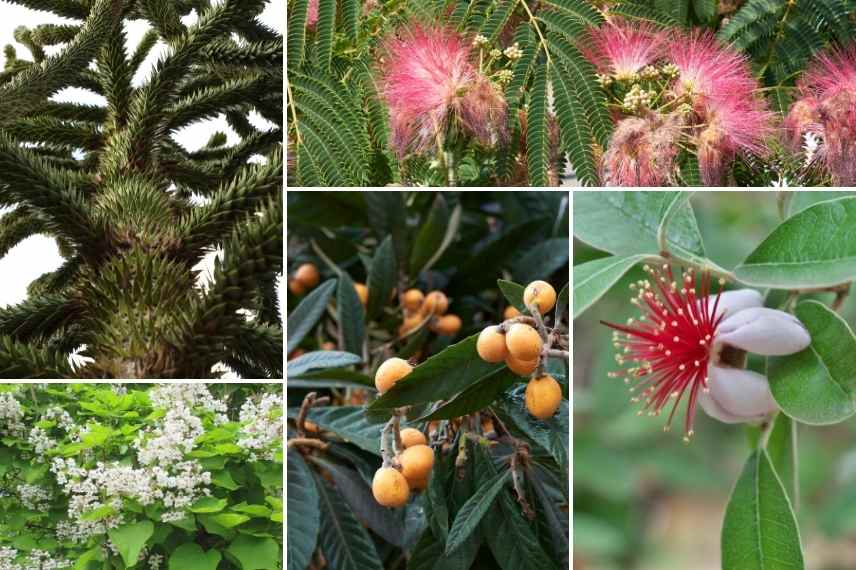
Araucaria araucana, Catalpa bignonioides, Albizia, Eriobotrya, Feijoa
- Fragrant plants: Plumeria (frangipani), Euphorbia mellifera, Magnolias, Brugmansia, some Rhododendrons…
- Climbers: Trumpet vine, Bougainvillea, Pandorea, Podranea, Pyrostegia venusta, Passionflower…
- Aquatic plants: Nelumbo nucifera (Lotus), Darmera peltata, Gunnera manicata, Nymphaea…
Don’t hesitate to complement this decor with trees and shrubs that evoke an exotic feel like Pittosporums. You can also adopt shrubs that really grow everywhere: Aucubas that are often overlooked, but so exotic, dwarf Pleioblastus bamboos, Mahonia, some original Miscanthus like Miscanthus sinensis ‘Zebrinus’ or Miscanthus sinensis ‘Ghana’, Boxwood also blends very well into this type of decor, just like Hydrangeas sargentiana with their large, fluffy leaves, Sorbarias sorbifolia with its superb compound foliage, Sarcococca hookeriana ‘Humilis’ or David’s Viburnum with its glossy, leathery foliage.
→ Read also: 7 exotic shrubs for summer flowering
Precautions to take before you get started!
- Most of the plants you will introduce will have South American to Australasian origins, and even though there are increasingly hardy varieties, your garden must be sheltered from cold winds to avoid losses during winters that can become increasingly cold. Creating small spreading zones in various parts of the garden is a good option to combat winds if you live in a cold region. These “spreading zones” can be plant-based or mineral (granite and schist retain heat particularly well and protect tender plants like Agapanthus, for example).
- A well-draining soil is recommended for most exotic plants: you must ensure to lighten your soil if it is too heavy, even clayey, as many so-called exotic plants require a filtering substrate. XXL plants that create a pronounced exotic effect often demand a soil that is also rich and fertile.
- An ideal exposure to the South and West for maximum flowering, but we will see below that many exotic or tropical-inspired plants can thrive wonderfully in more shade…
- Some tropical plants require space: assess your project in its dimensions and select the plants you adore: you will not install the same quantity of large plants in a city garden as in a large garden!
- Define your atmosphere: it will be lush, but it can be Mediterranean, even Moorish with a pond, or downright tropical with banana trees, palms, Puyas, and other Bignonia. The plants will vary slightly as will the materials.
Gwenaelle’s advice: Get inspired, gather ideas by visiting exotic gardens; there are some stunning ones in France, and of course in the tropics and even… in England! You will see the plants in situ, discover flowers or foliage that were unknown to you, and most importantly, remember those that you like. In France, from the famous exotic garden of Roscoff to the George Delasselle Garden on the island of Batz, both in Finistère, passing through the exotic garden of Eze to finish at the Domaine du Rayol on the Côte d’Azur, they will be an incredible source of inspiration.
Discover other Exotic garden feel
View all →Available in 1 sizes
Available in 2 sizes
Available in 1 sizes
Available in 1 sizes
Available in 1 sizes
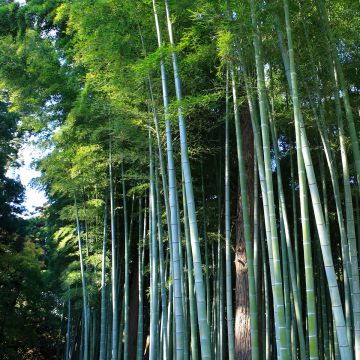
Available in 1 sizes
Available in 1 sizes
Available in 1 sizes
Available in 1 sizes
An exotic garden according to your exposure and region
An exotic garden looks beautiful on paper, you might say, but what do you do if you don’t have a sun-exposed garden or if you live well north of the Loire… or in colder regions?
You can certainly dream of an exotic atmosphere in the garden even when all the conditions don’t seem to be met. Moreover, exoticism doesn’t necessarily mean sunshine; most lush plants grow in tropical conditions that are rather shaded. Therefore, you can recreate a tropical microcosm by focusing almost exclusively on large foliage, contrasts of shapes, gradients and variegations of greens, and original forms when sunlight is lacking to provide blooms or when the hardiness of certain plants doesn’t allow you to plant them, risking inevitable failures.
- An exotic shade garden: Fatsia japonica, Farfugium japonicum, tree fern, Schefflera taiwaniana, Astilboides tabularis, Petasites japonicus ‘Giganteus’, Mahonia ‘Soft Caress’ and Mahonias, Aspidistras, Podophyllum, Hostas, Tricyrtis ‘Sinonome’, Hydrangea aspera ‘Sargentiana’, Arisaemas, Hakonechloas macra, Ophiopogons, and many ferns…
- An exotic sun garden: many palms, Euphorbia mellifera, Leptospermums, Hedychiums, Cycas, Hibiscus moscheutos, Cannas, Canary viperine, Grevilleas, Strelitzias, Puyas, Callistemons, Melianthus major, Yuccas, Gunneras, Aeoniums, Malaleuca, Mangaves, Alstroemerias, Watsonias, Catalpa bignonioides, etc.
- An exotic semi-shaded garden: Variegated Cordylines, Fatsia japonica, Alstroemerias, Leptospermum, Acanthes, Cycas, Daylilies, Callistemons, Tetrapanax, Mangaves, Schefflera taiwaniana, Arisaemas, Japanese loquat… many species in reality!
- A “chilly” garden: In less forgiving regions, focus on the hardiest plants: Beschorneria septentrionalis (or Mexican lily), Tricyrtis (or orchid lily), Kniphofias, Daylilies, Astilboides tabularis, Japanese banana (Musa basjoo ‘Sakhalin’), Acanthes, Podophyllum, Darmera peltata, Colocasia ‘Madeira’, Yuccas, Petasites japonicus ‘Giganteus’, Grevillea rosmarinifolia…
→ Read also: Exotic plants for shade; How to understand plant hardiness data? and 10 exotic and hardy plants for jungle garden, the Hedychium, an exotic for our climates.
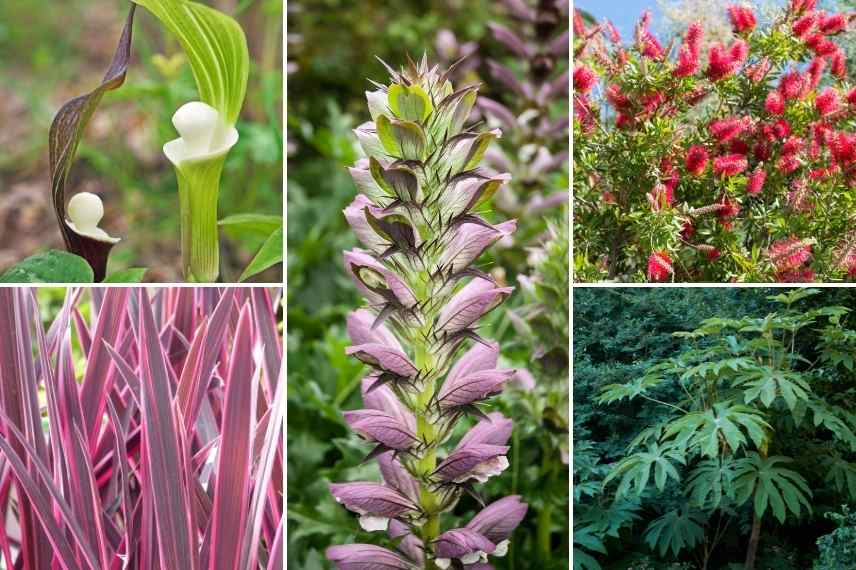
Arisaema sikokianum, Cordyline Australis “Pink Passion”, Acanthus, Callistemon and Tetrapanax for a slightly shaded exposure
Read also
Large-leaved shrubs and treesAn exotic garden according to the size of your garden
How to Create a Small Exotic Garden?
Small gardens are beautiful places to satisfy your need for exoticism. A small space is actually easier to design: you can install exceptional plants that will be immediately highlighted, particularly frost-sensitive plants that are often well protected in enclosed gardens, for example, or in small city gardens benefiting from a microclimate that retains heat. The lushness quickly achieved by the proximity of the plants creates a very interesting jungle effect.
And in a Large Garden?
In a large garden, you can invest in only a part where the feeling of an exotic garden will prevail: either because you have a large area and wish to create various atmospheres, or because a palm tree or bamboo already present, for example, inspires a change of scenery in a specific area, or simply to utilise a very sheltered part of the garden (near a wall) or a very sunny spot that lends itself to exoticism!
A large area can obviously be dedicated exclusively to the exotic garden. Your garden will then need to meet all the necessary conditions (especially climatic), and will likely be located on the coastal fringe, in Brittany, Normandy, or around the Mediterranean, which are regions particularly suited to this type of garden. You will have the privilege of being able to create groves of palms or banana plants, and pathways where the beds will showcase plants by continent, for example, or by type of plant (giant cacti, palm groves, large foliage, etc).
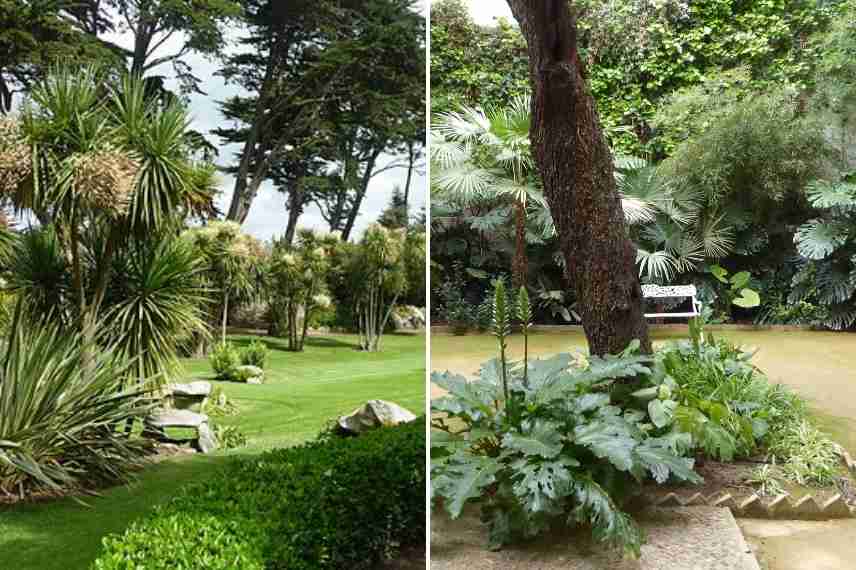
On the left, exotic garden by Georges Delasselle (© Henri Moreau), on the right, an exotic patio in Seville (© Gwenaëlle David)
Refine the decor
While the plants provide a strong tropical sensation, the furniture and materials add significant details that highlight the exotic atmosphere.
The furniture should ideally showcase exotic woods: primarily using woods like Acacia (preferable, as it comes from a less distant source than many tropical woods), and teak for tables, seating, benches, etc. The traditional teak bench can be represented by the famous Luytens bench, with its very interesting colonial style that fits well in this atmosphere. Rattan sofas and armchairs are also essential for creating a sense of escape. The hammock, either simple in cream rope or vibrant in colourful fabric, is a must-have item to display… or to suggest within the lush greenery when aiming to perfect the ambiance of this relaxing, tropical garden! Lanterns, also made of bamboo or wood, or even intricately worked metal in the style of moucharabié to evoke the Majorelle Garden, will be charming additions to illuminate your summer evenings. Don’t forget the cushions with exotic patterns, always in vogue despite trends, featuring toucans, paradise birds, palm foliage, and other ferns!
Finally, regarding the coverings (terraces, paths), opt for simplicity, as the plants play a predominant role that would be visually disrupted by excessive decoration. However, small borders or bamboo screens can be perfectly integrated in touches throughout your garden. Both dark and light shades are possible; it’s really a matter of taste, and especially of harmony with your structure, the colour of your walls, etc. Beautiful paint effects can, however, be added to a wall, for example, or on one or two pots: Majorelle blue, ochre, or terracotta bring an African or Asian touch, acting as stunning colour enhancers, providing contrast or harmony with the often warm flowerings.
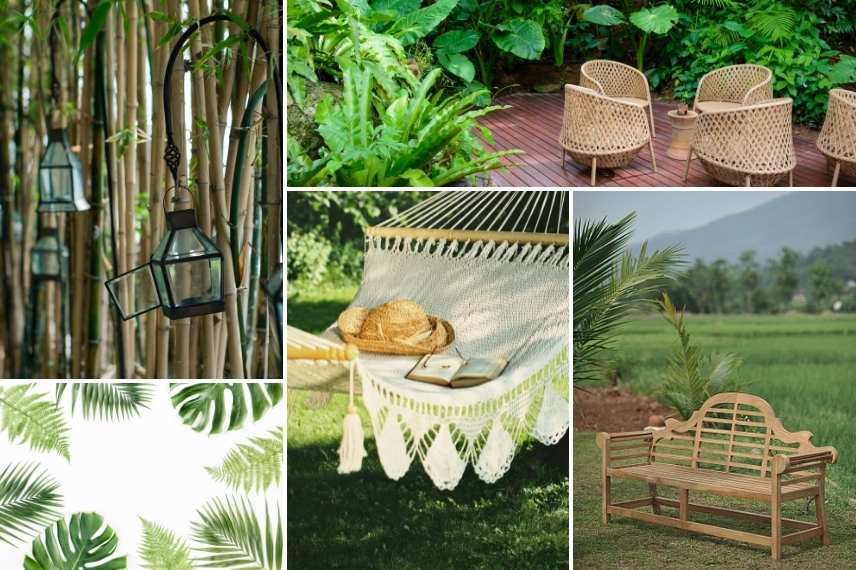
Some landscaping tips
- Don’t risk growing tropical plants that aren’t suited to your climate, as you may face many disappointments. Hedychiums and Proteas, among others, are challenging to cultivate. New varieties are more cold-resistant for many plants, such as bananas, so take your time to choose the right cultivars for your area.
- If you can’t resist a few frost-sensitive plants in a cold region, plant them in large pots, which you can move to a bright frost-free location for winter. In any case, a thick mulch is often essential to protect your beautiful southern or South African plants…
- Make the most of diverse foliage colours, as one of the great strengths of a tropical garden is its ability to offer dark green, variegated, and purple to black foliage.
- To create a profusion worthy of a true jungle, plant relatively closely in a dedicated bed.
- Play with the shapes and textures of foliage: crinkled leaves, tough and shiny foliage, finely cut foliage, large soft or palmate leaves, upright pointed foliage… it’s all about composing with the extraordinary variety of laminae that nature offers…
- Use a warm colour palette for flowering: from yellow to orange, purple, and vibrant pinks. The wonderful Agapanthes and Puyas are among the exceptions!
- Combine perennials, bushes, trees, palms, and ground covers like Begonias grandis…: create different strata to bring structure and volume to your little earthly paradise…
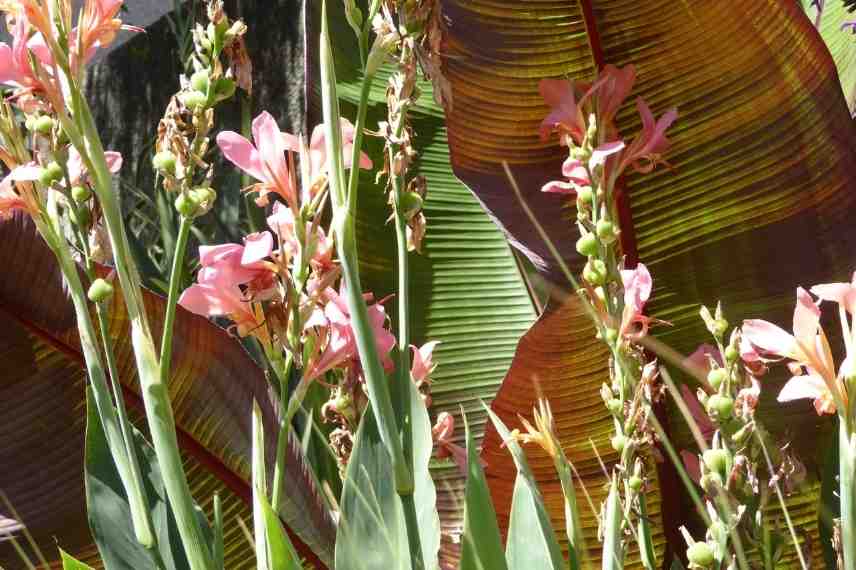
Tropical atmosphere (© Gwenaëlle David)
- Subscribe!
- Contents
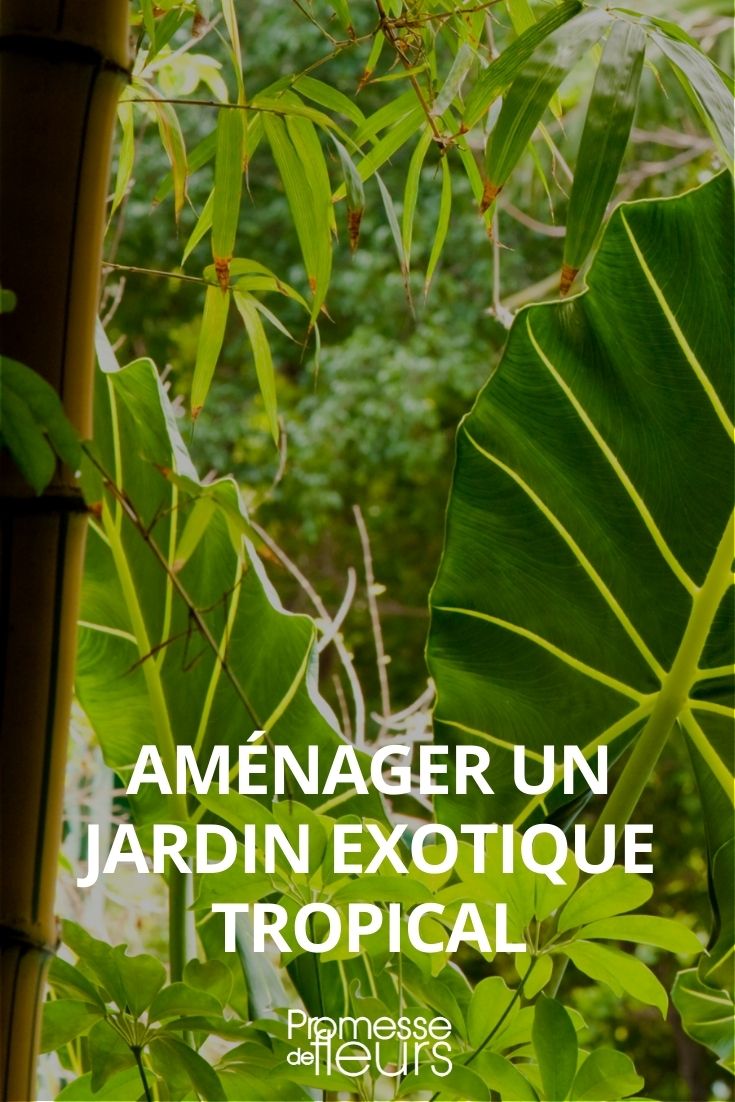































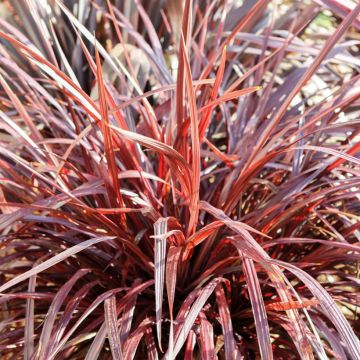
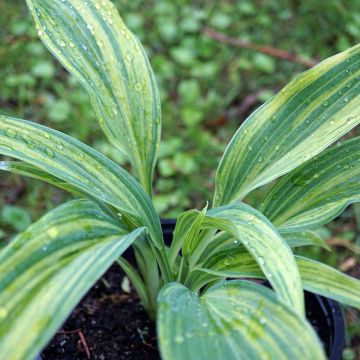
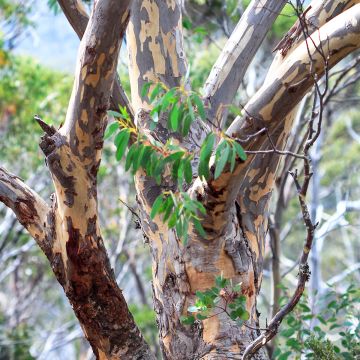
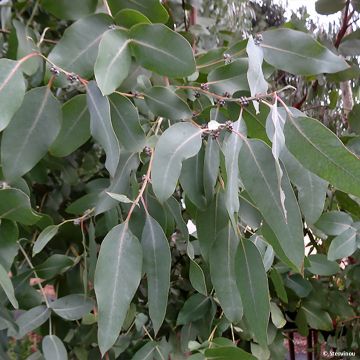
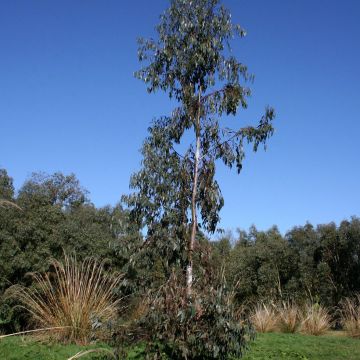
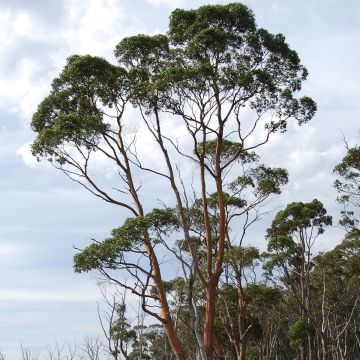
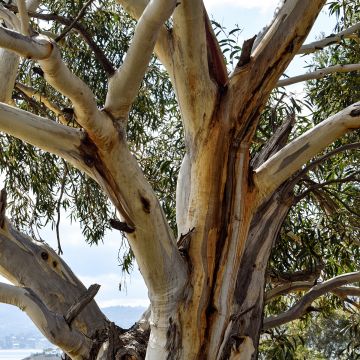
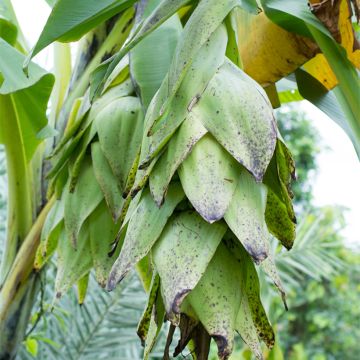
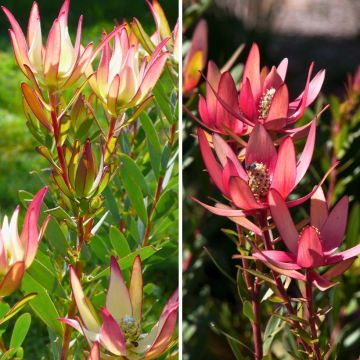
Comments